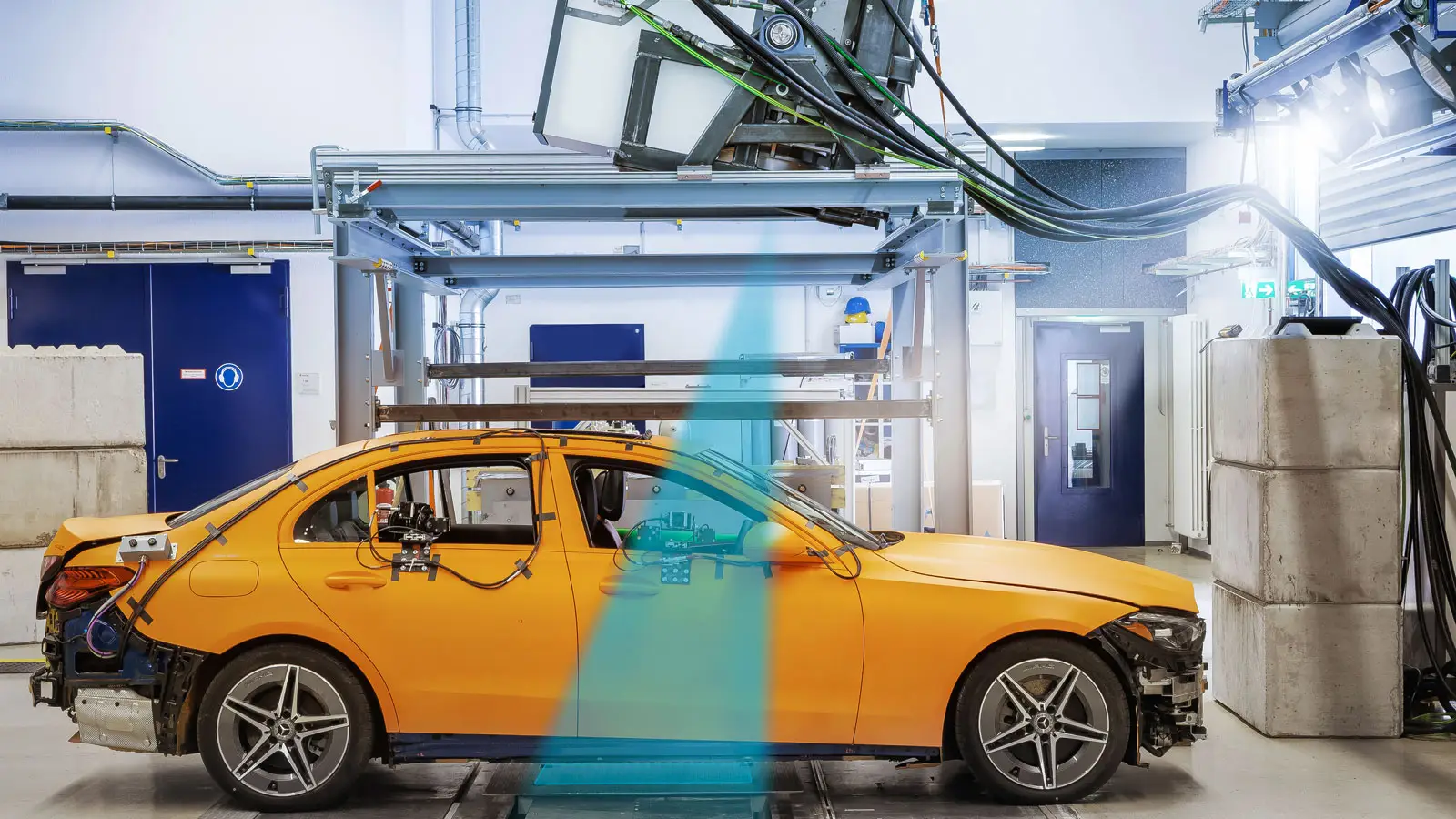News
Groundbreaking X-Ray Crash Test Unveiled by Mercedes-Benz and EMI

In collaboration with EMI, Mercedes-Benz achieves a first with an X-ray crash test, offering unparalleled insights into vehicle safety dynamics using advanced imaging technology.
The groundbreaking experiment commenced with a dramatic collision at 60 km/h, where a device equipped with a crash barrier forcefully struck an orange C-Class sedan from the side. Although crash tests are routine for experts, the true innovation in this scenario was the application of X-ray imaging from above the crash site, utilizing a linear accelerator as the X-ray source. This novel approach was a collaborative effort between Mercedes-Benz and the Fraunhofer Institute for High-Speed Dynamics, Ernst Mach Institute (EMI) in Freiburg, marking the world’s inaugural X-ray crash test involving an actual vehicle.
The core aim of this demonstration was to explore the potential of high-speed X-ray technology in revealing the intricate internal deformations that occur during a crash, which are typically hidden from view. The sophisticated imaging capabilities provided by this technology allow for a detailed analysis of the deformation processes, thanks to the multitude of high-resolution images it generates.
Mercedes-Benz’s vehicle safety division, in partnership with EMI, has been investigating the integration of X-ray technology into crash testing for several years. A significant advancement was achieved with the introduction of a linear accelerator equipped with 1 kHz technology, which proved to be much more potent than the X-ray flashes used in previous experiments. The high photon energy of the linear accelerator, capable of reaching up to nine megaelectron volts, permits the penetration of all standard automotive materials, enabling a comprehensive analysis of the vehicle’s structure during a crash.
The unique feature of this accelerator is its ability to emit a continuous stream of X-ray pulses, allowing for up to 1,000 images per second, significantly surpassing the capabilities of traditional X-ray methods. This high-speed imaging ensures the capture of deformation processes in great detail, free from any motion blur.
As the crash unfolds, the X-ray beams penetrate the vehicle and dummies, with a flat detector positioned beneath the vehicle capturing the images. The intensity of the electrical signal generated upon radiation impact on the detector varies according to the absorption levels by the vehicle and dummy structures, influencing the resulting image’s grey value.
The X-ray system’s capability to shoot around 100 still images within the milliseconds of impact offers unprecedented insights into the internal dynamics of safety components and dummy movements during a crash. This method enables a meticulous examination of how specific parts of the dummy, such as the thorax, are compressed or how certain vehicle components deform upon impact.
In addition to providing valuable insights, this X-ray crash testing technique does not interfere with other analysis tools used during crash tests, including interior cameras within the test vehicle.
To ensure the safety of all involved, EMI developed a comprehensive radiation protection plan, including the use of dosimeters to monitor exposure levels and adherence to legal requirements for operational approval. The facility is further safeguarded by extensive physical protection measures, such as a 40-centimeter-thick concrete wall encircling the building and a massive 45-tonne protection door.
Source: Mercedes-Benz
Ethan Brown
2024, Mar 13 05:44